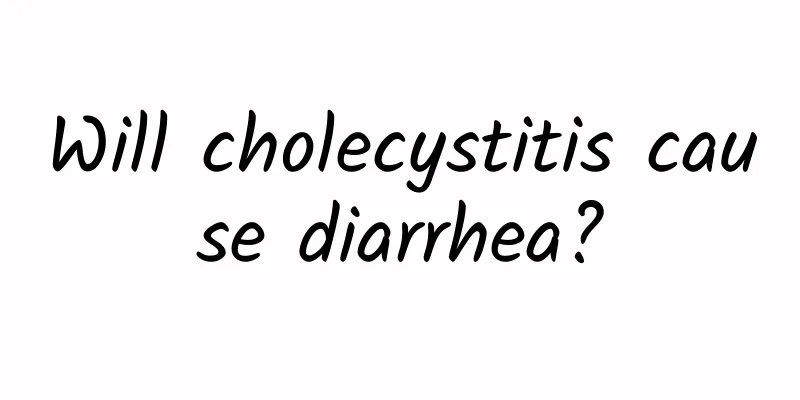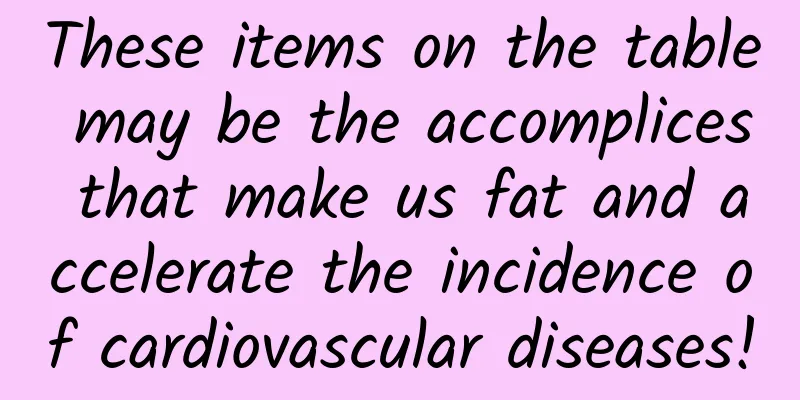Will cholecystitis cause diarrhea?

|
The gallbladder belongs to the digestive system. Inflammation of the gallbladder can cause damage to the digestive system. Many people with cholecystitis also suffer from diarrhea. Many people may not understand why cholecystitis causes diarrhea. Is it because they have eaten bad food? But when I thought about it carefully, I realized that my diet was very healthy and there was no one to suspect, so I didn't know what to do. So, will cholecystitis cause diarrhea? 1. Acute cholecystitis The clinical manifestations of acute calculous cholecystitis are basically the same as those of acute acalculous cholecystitis. (1) Symptoms ① Pain: Severe pain or colic in the right upper abdomen is mostly caused by acute cholecystitis due to stones or parasites blocking the neck of the gallbladder. The pain often occurs suddenly and is very severe, or presents a colic-like state. It often occurs after eating high-fat foods and often occurs at night. General pain in the right upper abdomen is seen in acute cholecystitis without obstruction of the cystic duct. The pain in the right upper abdomen is generally not severe and is mostly persistent bloating. As the gallbladder inflammation progresses, the pain may also worsen. The pain is radiating, and the most common radiating sites are the right shoulder and the lower angle of the right scapula. It is caused by the stimulation of the right phrenic nerve endings and the peripheral nerves of the abdominal wall by gallbladder inflammation. ②Nausea and vomiting The most common symptoms include persistent or frequent nausea and vomiting, which can cause dehydration, collapse and electrolyte imbalance, and are more common when stones or ascaris block the gallbladder duct. ③ Chills, chills, and fever. Mild cases often have chills and low fever; severe cases may have chills and high fever, the temperature may reach above 39°C, and mental symptoms such as delirium and delirium may occur. ④ Jaundice is less common. If jaundice occurs, it is generally mild, indicating that the infection has spread to the liver through the lymphatic vessels, causing liver damage, or the inflammation has invaded the common bile duct. (2) Main signs Abdominal examination revealed tense abdominal muscles, tenderness, rebound tenderness, and positive Murphy's sign in the right upper abdomen and mid-upper abdomen. In patients with cholecystectomy or pericholecystic abscess, a tender mass or a significantly enlarged gallbladder may be felt in the right upper abdomen. When abdominal tenderness and abdominal muscle tension extend to other areas of the abdomen or the entire abdomen, it indicates gallbladder perforation. Or there is acute peritonitis. 15% to 20% of patients suffer from liver damage due to edema around the cystic duct, gallstone compression and pericholecystitis, or inflammation involving the common bile duct, causing spasm and edema of the sphincter of Oddi, leading to bile excretion obstruction and mild jaundice. If the jaundice becomes significantly worse, it may indicate common bile duct obstruction with stones or concurrent common bile duct inflammation. In severe cases, signs of peripheral circulatory failure may occur. Blood pressure is often low and even infectious shock may occur, which is particularly common in severe cases of purulent gangrene. 2. Chronic cholecystitis (1) Symptoms Persistent dull pain or discomfort in the right upper abdomen; symptoms of indigestion such as nausea, belching, acid reflux, abdominal distension and heartburn; pain in the right lower scapular area; symptoms worsen after eating high-fat or greasy food; long course of disease, with alternating acute attacks and remissions. Acute attacks are the same as symptoms of acute cholecystitis, and remission may sometimes be without any symptoms. (2) Physical signs There may be mild tenderness and percussion pain in the gallbladder area, but no rebound tenderness; in cases of cholestasis, an enlarged gallbladder may be palpated; in acute attacks, there may be muscle tension in the right upper abdomen, normal body temperature or low fever, and occasionally jaundice. The tenderness point of the gallbladder is at the intersection of the outer edge of the right rectus abdominis and the costal arch, the tenderness point of the thoracic spine is beside the 8th to 10th thoracic vertebrae, and the tenderness point of the right phrenic nerve is between the two lower corners of the sternocleidomastoid muscle on the right side of the neck. |
<<: How long does it take for cholecystitis to heal after taking medicine?
Recommend
The efficacy and function of mountain green tea
Mountain green tea is rich in nutritional value a...
The Year of the Tiger is here. Are wild tigers doing well? A chart shows the current status of the "big cats"
|||| Produced by: Science Central Kitchen Produce...
"Hot-selling" down jackets are trending! When wearing down jackets, it is best not to do these things...
Temperatures have risen in many places recently I...
Did you know that many of the firsts in Chinese civilization came from Henan?
The earliest playable musical instrument, the ear...
comScore: LivingSocial desktop traffic plummeted 42% year-on-year in September 2013
When Amazon released its third-quarter earnings r...
The efficacy and function of Nanteng
For Chinese medicinal materials such as Nanteng, ...
The efficacy and function of water eggplant
Water solanum is a medicinal material that can tr...
Can I drink American ginseng after drinking alcohol?
American ginseng is a very popular medicinal herb...
A new variant of the novel coronavirus has emerged? 637 cases have been found! Will it be impossible to eliminate the virus? Wu Zunyou responded
From 0:00 to 24:00 on April 1, 2,129 new confirme...
Don’t wear these colors of swimsuits when swimming in summer, it’s really dangerous!
Summer is here, and many people may be eager to j...
Can intestinal flora be "transmitted" between people? I love you, so I share my intestinal flora with you!
As the saying goes, "Birds of a feather floc...
Sunglasses should be replaced every 2 years, otherwise it’s the same as not wearing them?
gossip “Do I need to replace sunglasses every two...
FlightView: Survey shows that most passengers are dissatisfied with in-flight Internet services
Providing wireless Internet access to passengers ...
This deafening behavior is probably something we use every day!
When riding the subway, put on headphones and wat...
Will the epidemic affect human psychology for 20 years? Experts say so...
Working from home, online teaching, and staying a...









